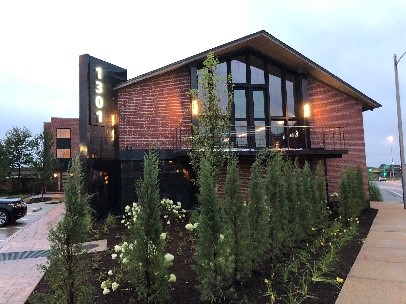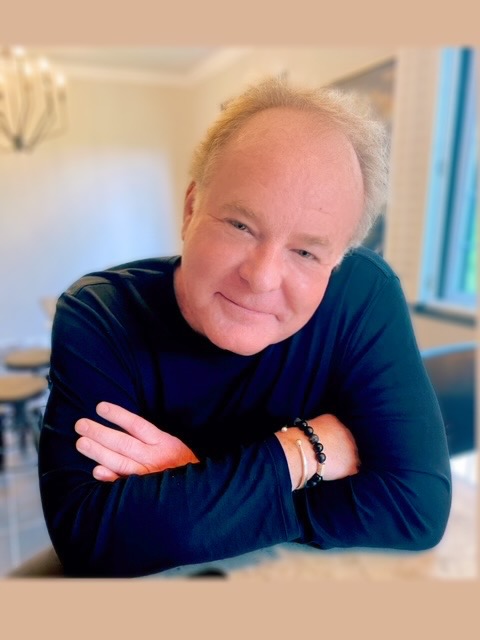Throughout the years, I have engaged with a variety of consultants with mixed results. It’s always a challenge to have high expectations in a short interaction with anyone, let alone an individual who is contracted to bring about change or correction to a current issue. Much like a great therapist, time spent understanding the complete landscape, the unique challenges, and overall goals are critical for success. Also akin to therapy, a good consultant will look to focus directly on the points of disfunction to create a path through the trouble areas. The process is not a quick one, and it’s sometimes painful, as it can be a time of vulnerability.
Finding the Right Consultant
 To ensure you have the right consultant, it is important to start by reviewing the skills and experience that align with your needs. When things get difficult, as humans, we tend to value “outside” opinions wholly different than those currently in the organization. It is rare that everyone in a company is entirely incapable of good decisions and insight. A holistic combination of external ideas and objective input combined with the right internal group of key stakeholders is the key.
To ensure you have the right consultant, it is important to start by reviewing the skills and experience that align with your needs. When things get difficult, as humans, we tend to value “outside” opinions wholly different than those currently in the organization. It is rare that everyone in a company is entirely incapable of good decisions and insight. A holistic combination of external ideas and objective input combined with the right internal group of key stakeholders is the key.
Hiring the Wrong Consultant
 There was a time when I was a member of an organization that had multiple entities under one umbrella. The market had taken a downturn, and the parent company was struggling to pivot. The decision was made to bring in a consultancy. After listening to the consultants for a period, it was clear that they were not specifically skilled in the area of need. Still, the parent company had paid a substantial fee for them and was determined to get the most out of the arrangement. While constructive comments from internal employees were being ignored, senior management took advice from the hired group without considering the consequences of the suggestions.
There was a time when I was a member of an organization that had multiple entities under one umbrella. The market had taken a downturn, and the parent company was struggling to pivot. The decision was made to bring in a consultancy. After listening to the consultants for a period, it was clear that they were not specifically skilled in the area of need. Still, the parent company had paid a substantial fee for them and was determined to get the most out of the arrangement. While constructive comments from internal employees were being ignored, senior management took advice from the hired group without considering the consequences of the suggestions.
Having voiced dissension on key points and concern for the recommended direction, a response was met by a senior member to “put me in my place.” Upon further review of the fashion designs and development provided by the consultancy, it was clear to my team and me that the direction would only create further problems for the already troubled company. This insight was met with a warning against resisting the decision to follow the path outlined by the hired group.
 When at last, it became time for the consultants to share their big reveal to senior management, the lead on their team laid out the strategy and presented the designs. At the same time, I provided alternative options while providing advice to minimize the potential negative implications of adopting their less commercial approach. Silence.
When at last, it became time for the consultants to share their big reveal to senior management, the lead on their team laid out the strategy and presented the designs. At the same time, I provided alternative options while providing advice to minimize the potential negative implications of adopting their less commercial approach. Silence.
In a shocking move, the senior consultant wiped all the designs on the table, looked at his team, and said, “these are terrible. We must rework these.” Everyone was stunned, including me. Four months into the 6-month agreement, the company canceled the contract.
It was a critical lesson. Much like the classic parable “The Emperor’s New Clothes,” the moral teaches us not to suspend disbelief or logic when interacting with others regardless of the investment.
A good consultant will focus on where value can be provided while working with the teams to ensure the best decision is made on specific points of change. The adoption of pivots should be balanced and methodical, evolutionary, not revolutionary in most cases.
Looking Inside First
 All too many times, I have witnessed the predictable resolution to a company’s struggle; hire a top-level executive, then institute a sweeping wholesale change for change’s sake. In most cases, this radical change loses existing customers and alienates those working in the organization.
All too many times, I have witnessed the predictable resolution to a company’s struggle; hire a top-level executive, then institute a sweeping wholesale change for change’s sake. In most cases, this radical change loses existing customers and alienates those working in the organization.
The proper approach is spending time with active members of the company while taking a deep look at the numbers to determine the strengths and weaknesses in the internal operations, the external consumer sentiment, and traction in the market. With this information, benchmarking against stronger performing companies is a good next step. From here, a methodical approach to designing a strategic plan for 1, 3, and 5 years to guide decisions, knowing that as you gain more information, plans will be modified. As I have mentioned in many articles and interviews, we live in a microwave society. Everyone wants things quickly, but getting into a difficult position did not happen overnight, and nor will getting out of challenges happen rapidly.
Sharing Experience
 Our decision to engage as consultants has been one we have taken with extreme diligence, intention, and careful thoughtfulness. As a group, we have gained considerable experience in multiple facets of our industry and out of care for positive evolution. It is time to share our knowledge and learned skill with those who feel it is time to embrace third-party dialogue. No one has all the answers; however, if we can help any organization or individual think through their pivots and challenges in this ever-changing marketplace while avoiding costly mistakes, we are eager to do so.
Our decision to engage as consultants has been one we have taken with extreme diligence, intention, and careful thoughtfulness. As a group, we have gained considerable experience in multiple facets of our industry and out of care for positive evolution. It is time to share our knowledge and learned skill with those who feel it is time to embrace third-party dialogue. No one has all the answers; however, if we can help any organization or individual think through their pivots and challenges in this ever-changing marketplace while avoiding costly mistakes, we are eager to do so.
Key Things to Consider When Choosing a Consultant
 Time and Experience: Understanding the breadth of experience for your consulting choice is key. In experience, also comes time. In most cases the longer someone has been in the industry, the greater the opportunity to witness and understand other companies’ journeys. Because everyone’s path is different, ensuring the experience lines up with your needs is tremendously important.
Time and Experience: Understanding the breadth of experience for your consulting choice is key. In experience, also comes time. In most cases the longer someone has been in the industry, the greater the opportunity to witness and understand other companies’ journeys. Because everyone’s path is different, ensuring the experience lines up with your needs is tremendously important.
Personal Dynamic: Finding a fit in personal dynamics is essential, especially in this time of vulnerability and transition. Recommendations are less apt to become adopted when personalities and viewpoints are not complimentary. Considerations include: Does the consultant match with the overall dynamics of your organization? In your interview with them, are they good listeners? Do they engage in strong communication and conversation, thoroughly vetting an issue? Are your philosophies personally and professionally aligned?
Plan of Action: When engaging a consultant for a larger project, review in advance of transition the established game plan and action steps among all the members. The group review will help set expectations from the discovery phase to challenge recognition, outline the steps toward resolution, and timing while unifying the goal for adoption.
Commitment: Clearly, both parties need to be on the same page about being dedicated to the entire process, supporting transparency, vulnerability, dedication to the time and energy required to accomplish the goals. That being said, there is a balance between providing a consultant with the information they need to provide insights and recommendations versus working with a consultant that wants it all made easy for them.
Upon engagement, receiving copious amounts of forms and questions to fill in can delay the process and lacks the more personal, conversational approach needed to capture the complete view. Being able to talk with several people in the organization, feel their energy, learn from their experience is incredibly valuable in this process. It is wise to make sure the consulting is willing to also put in the work to spend the time to engage and understand the situation clearly.
Follow Up: After developing the plan of action, there is a period that the organization must activate the decisions made and monitor the results. It is important that the consultant is willing to engage in follow-up sessions to properly guide the transition, gauge the success, and help if there are stumbling blocks along the way.
Putting it Together
 When approached correctly, choosing to work with a consultant can positively transform you and your business. To begin the journey:
When approached correctly, choosing to work with a consultant can positively transform you and your business. To begin the journey:
- Set your intention for the desired outcome of the collaboration
- Be ready to feel vulnerable
- Listen inside the organization
- Give the outside comments time to distill, vet them against industry information, the internal numbers, and discuss with trusted team members
In difficult times everyone inside the organization can struggle to feel confident about key decisions that must be made. Remember, one of my key phrases – “evolution not revolution.” Although this approach requires more time to exercise, it is the more viable option. It allows the target audience to recognize key shifts in the vision and business plan while you methodically gauge the success of each step.
To learn more about consulting you can watch and listen to Clothing Coulture Season 3 Episode 8 “Identify and Fix Problems in Fashion Production” here.
 Bret Schnitker. As an industry apparel executive for more than 30 years, working in all facets of the sector, Bret has had the unique experience to do business in 70 countries, working with artisans and experts worldwide. Having been in over 1000 factories that employ 200,000 people, he cares deeply about the value of the opportunity this industry brings to developing countries and their people.
Bret Schnitker. As an industry apparel executive for more than 30 years, working in all facets of the sector, Bret has had the unique experience to do business in 70 countries, working with artisans and experts worldwide. Having been in over 1000 factories that employ 200,000 people, he cares deeply about the value of the opportunity this industry brings to developing countries and their people.
Founder and CEO of Stars Design Group, a fashion design and production house, he believes in fostering an environment of innovation and evolution to stay ahead of the rapidly changing business climate. With offices worldwide and a network of 67 factories globally, Bret helps clients (brands and retailers) solve garment initiatives and production goals, regardless of category or country.
Uniquely Saint Louis based, with its historical legacy in apparel and new focus of innovation, Bret is invested in the blend of talent and technology to develop solutions that serve the demands of the consumer base while supporting social and environmental goals.

